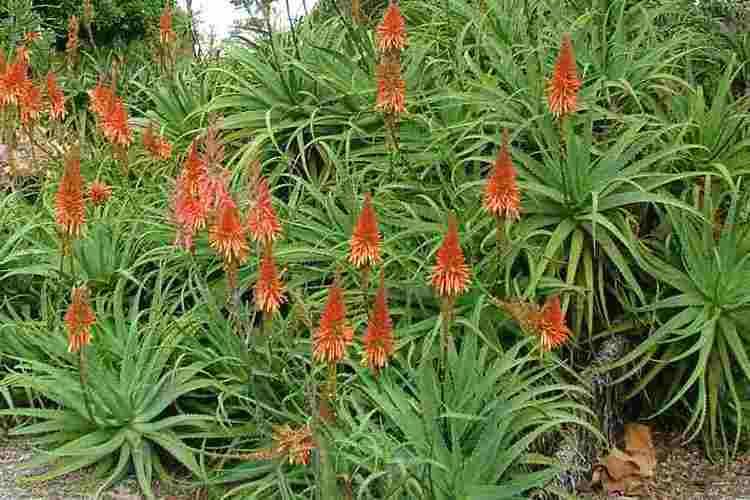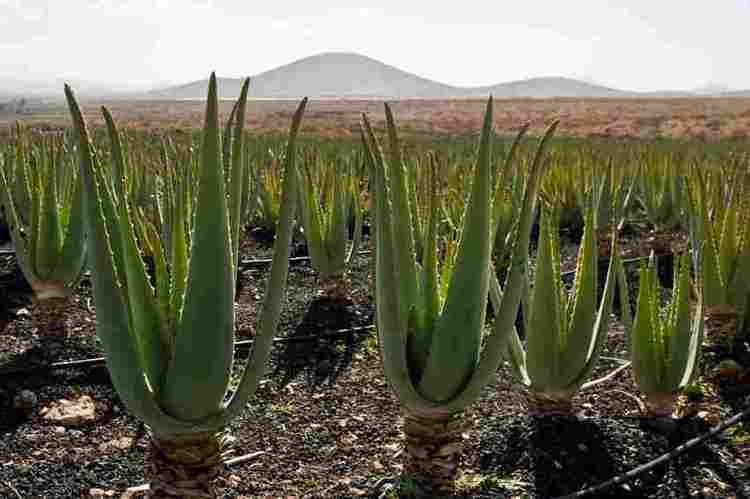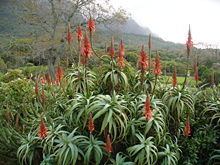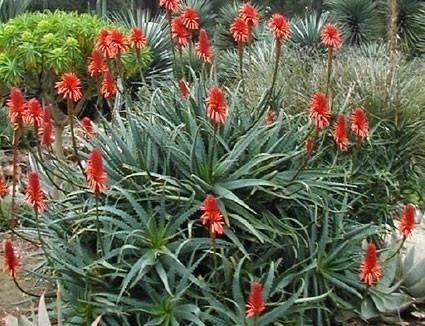Clade Monocots Rank Species | Clade Angiosperms | |
 | ||
Similar Aloe ferox, Aloe vera, Guinea‑fowl Aloe, Tiger aloe, Aloe maculata | ||
Aloe arborescens torch or tree aloe
Aloe arborescens (krantz aloe, candelabra aloe) is a species of flowering succulent perennial plant that belongs to the Aloe genus, which it shares with the well known and studied Aloe vera. This species is also relatively popular among gardeners and has recently been studied for possible medical uses.
Contents
- Aloe arborescens torch or tree aloe
- My aloe arborescens aloe elgonica seedlings update
- Description
- Distribution
- Cultivation
- Preclinical studies
- References

The specific epithet arborescens means "tree-like".
My aloe arborescens aloe elgonica seedlings update
Description

Aloe arborescens is a large multi-headed sprawling succulent, its specific name indicating that it sometimes reaches tree size. Typical height for this species 2–3 metres (6.6–9.8 ft) high. Its leaves are succulent and are green with a slight blue tint. Its leaves are armed with small spikes along its edges and are arranged in rosettes situated at the end of branches. Flowers are arranged in a type of inflorescence called a raceme. The racemes are not branched but two to several can sprout from each rosette. Flowers are cylindrical in shape and are a vibrant red/orange color.

Taxonomically, it forms part of the Arborescentes series of very closely related Aloe species, together with Aloe pluridens and Aloe mutabilis.
Distribution

Aloe arborescens is endemic to the south eastern part of Southern Africa. Specifically, this range includes the countries of South Africa, Malawi, Mozambique and Zimbabwe. It has the third largest distribution amongst the aloe genus. Although Aloe arborescens has adapted to many different habitats, its natural habitat usually consists of mountainous areas including rocky outcrops and exposed ridges. Its common name krantz aloe refers to the Afrikaans word "krantz", which means a rocky cliff. Its habitat can vary and is one of only a few species of aloe that is found growing from sea level up to the tops of mountains.
Cultivation
Aloe arborescens is valued by gardeners for its architectural qualities, its succulent green leaves, large vibrantly-colored flowers, and winter blooming. The sweet nectar attracts birds, butterflies and bees. With a minimum temperature of 10 °C (50 °F), in temperate regions it is grown under glass. The cultivar A. arborescens 'Variegata' has gained the Royal Horticultural Society's Award of Garden Merit.

In Southern Africa, Aloe arborescens is traditionally planted around kraals (domestic stock enclosures) as a living fence or security hedge. It often happens that the position of old kraals can still be seen many years after they have been abandoned, because the aloes persist.
This aloe is easily propagated by cuttings.
Preclinical studies

In a lab study conducted by Jia et al., wounds were induced in rat and rabbit test subjects and pulp from Aloe arborescens was applied to the wounds. Results showed that healing rates were improved in wounds addressed with Aloe arborescens. According to the study, applications of the Aloe arborescens extract “tended to significantly reduce the wound severity with respect to that with saline treatment.” the study found that Aloe arborescens can be used to reduce microbial growth. The study found that the application had “effectively inhibited the bacterial growth for four bacteria during the observation period of time”.
Lab results show that A. arborescens inhibits rat myeloma cell proliferation.

